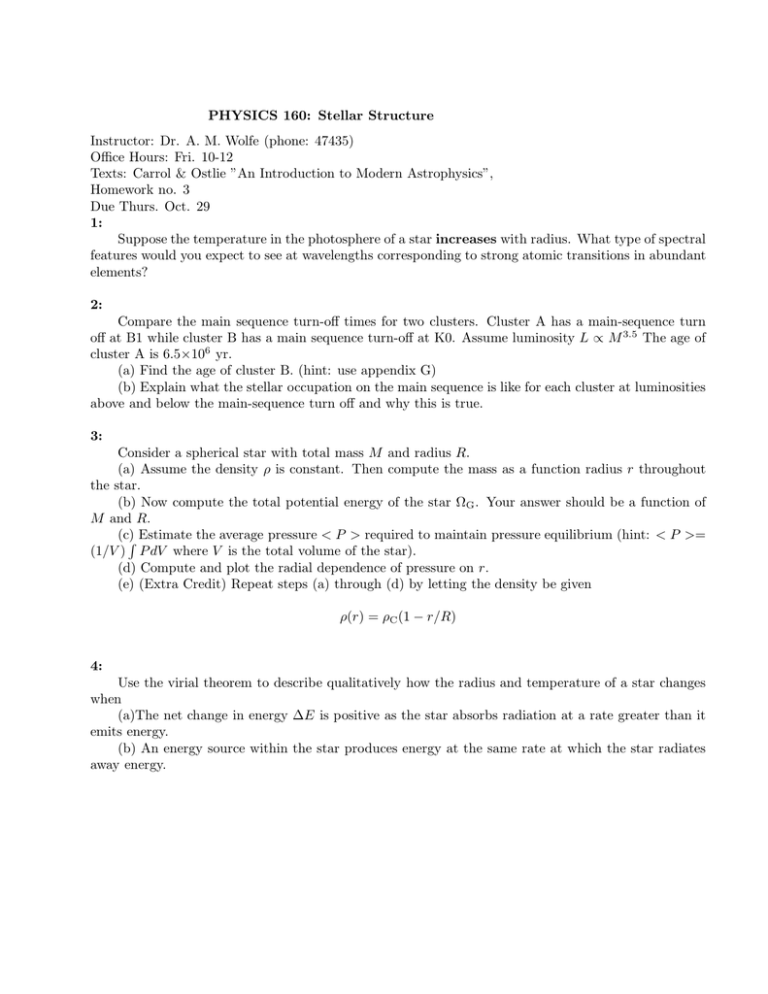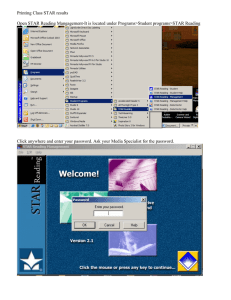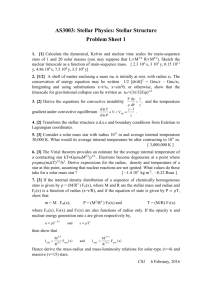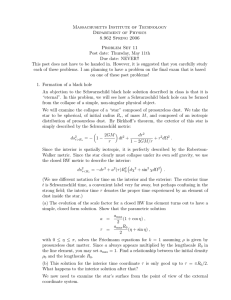PHYSICS 160: Stellar Structure Instructor: Dr. A. M. Wolfe (phone: 47435)
advertisement

PHYSICS 160: Stellar Structure Instructor: Dr. A. M. Wolfe (phone: 47435) Office Hours: Fri. 10-12 Texts: Carrol & Ostlie ”An Introduction to Modern Astrophysics”, Homework no. 3 Due Thurs. Oct. 29 1: Suppose the temperature in the photosphere of a star increases with radius. What type of spectral features would you expect to see at wavelengths corresponding to strong atomic transitions in abundant elements? 2: Compare the main sequence turn-off times for two clusters. Cluster A has a main-sequence turn off at B1 while cluster B has a main sequence turn-off at K0. Assume luminosity L ∝ M 3.5 The age of cluster A is 6.5×106 yr. (a) Find the age of cluster B. (hint: use appendix G) (b) Explain what the stellar occupation on the main sequence is like for each cluster at luminosities above and below the main-sequence turn off and why this is true. 3: Consider a spherical star with total mass M and radius R. (a) Assume the density ρ is constant. Then compute the mass as a function radius r throughout the star. (b) Now compute the total potential energy of the star ΩG . Your answer should be a function of M and R. (c)R Estimate the average pressure < P > required to maintain pressure equilibrium (hint: < P >= (1/V ) P dV where V is the total volume of the star). (d) Compute and plot the radial dependence of pressure on r. (e) (Extra Credit) Repeat steps (a) through (d) by letting the density be given ρ(r) = ρC (1 − r/R) 4: Use the virial theorem to describe qualitatively how the radius and temperature of a star changes when (a)The net change in energy ∆E is positive as the star absorbs radiation at a rate greater than it emits energy. (b) An energy source within the star produces energy at the same rate at which the star radiates away energy.





